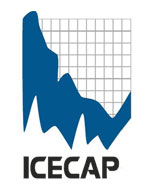BBC
The Environment Minister Sammy Wilson has angered green campaigners by describing their view on climate change as a “hysterical psuedo-religion”. In an article in the News Letter, Mr Wilson said he believed it occurred naturally and was not man-made. “Resources should be used to adapt to the consequences of climate change, rather than King Canute-style vainly trying to stop it,” said the minister.
Peter Doran of the Green Party said it was a “deeply irresponsible message.” Mr Wilson said he refused to “blindly accept” the need to make significant changes to the economy to stop climate change. “The tactic used by the “green gang” is to label anyone who dares disagree with their view of climate change as some kind of nutcase who denies scientific fact,” he said.
The minister said he accepted climate change can occur, but does not believe the cause has been identified. “Reasoned debate must replace the scaremongering of the green climate alarmists.” John Woods of Friends of the Earth said Mr Wilson was “like a cigarette salesman denying that smoking causes cancer”. “Ironically, if we listen to him Northern Ireland will suffer economically as we are left behind by smarter regions who are embracing the low carbon economy of the future.”
It is the latest clash between Mr Wilson and green groups since his appointment as environment minister in June. See earlier story here. In it he said the following:
“I am not convinced and I don’t think that there is any firm evidence to show that all of that climate change is due to CO2 emmissions,” Mr Wilson said.
Some environmental groups have criticised Mr Wilson’s appointment.
However, Mr Wilson said he would do a good job.
“As minister for the environment I’ve got a duty to ensure that there’s a good balance set between the need to develop our economy, to provide homes, factories, roads etc and at the same time to protect the environment.
“I think we have to make sure we do not allow the agenda for NI to be dominated by the people who can sometimes be described as green fanatics,” he said.
By Britt Weygandt, Executive Director, Western Business Roundtable
Did you see this recent Associated Press story entitled, ”U.S. on verge of grand-scale blackout”?
Contrast this dire assessment by technical experts with what one sees playing out in political arenas across the West:
(1) Activist groups are working to slow or stop the completion of the two main multi-year, stakeholder-based transmission corridor processes that both Democrats and Republicans in Congress approved as part of the Energy Policy Act of 2005;
(2) Activist groups are working to slow or stop completion of public lands infrastructure corridors that both Democrats and Republicans in Congress approved in 2005;
(3) Activist groups are suing to block the construction of virtually every single baseload coal-fired power plant, in spite of advanced environmental technologies these plants would deploy;
(4) Activist groups are threatening to begin suing to block the construction of natural gas-fired power plants;
(5) Activist groups continue to block expansion of new baseload hydropower facilities in the West;
(6) Activist groups are gearing up to block construction of any baseload nuclear power plants across the West;
(7) Activist groups are pressuring government leaders to limit access by larger, baseload technologies to the region’s high-voltage transmission grid and instead to artificially favor non-baseload, intermittent power facilities that will (at some point) further stress the reliability of the entire Western grid;
(8) Activist groups, and their supporters in Congress, are pushing for a massive expansion of federal wilderness and other restrictive public land designations that would severely limit the ability to plan and implement the large-scale transmission necessary to support the Western grid.
Many Governors across the West have been trailblazing leaders in pushing for greater investment in new, high-voltage transmission lines. Yet the Western Governors’ Association is focusing its energy on discussing “renewable energy zones” instead of pushing for resource-independent transmission. While such zones are a laudable idea, they don’t address the fundamental challenge of keeping the lights on in the West.
Moreover, WGA has placed groups like the Sierra Club and the Wilderness Society in key leadership positions in their energy infrastructure planning processes. These are among the same groups that often sue to slow or stop virtually every major proposed electric transmission line or baseload power facility.
It is critically important that the West re-focus on the fundamental issue here: we have a long way to go to catch up on our backbone electricity infrastructure, and a shrinking window in which to get there. Failure is simply not an option. People lose their lives when the lights go out.
That is why we are convening a regional summit this November called “Keeping the Lights On In The West - Averting Economic Disaster and Saving Lives.” This summit will feature some of the nation’s leading thinkers on how we can strengthen our nation’s energy grid. It will focus on real solutions - not overheated rhetoric. See full release here.
By Stephen Murgatroyd, Innovation, Change and Development
The earth did get warmer between 1850 and 2007 by around 0.7 degrees. Most of this warming occurred before 1940, with the more recent period contributing just 0.2 degrees to warming. Global earth temperatures have not risen significantly since 1995. In fact, several prominent climate scientists are now confidently predicting that the earth is entering a significant cooling period and that we should be more concerned with a coming mini ice age than with the dire predictions of global warming.
In August 2008, the sun failed to produce a single sun spot - a key factor in the warming of the earth. The last time this occurred was in June 1913. Some scientists now suggest that the pattern of sun spot behaviour since 1749 is showing clear signs of change in line with the same patterns seen in the three previous periods of significant earth cooling since records began. Known as the Dalton, Maunder and Spörer Minimums, each was associated with a period of rapid earth cooling, one of which was cold enough to be known as a mini ice age (1450 to 1820). The dominant prediction amongst those scientists that take the view that we are entering a cooling period is that the earth will cool for a period of two decades. Even the Old Farmers Almanac takes this view of the future.
Meanwhile, carbon dioxide (CO2) emissions continue to grow. The fact that this is occurring at the same time that the earth is cooling suggest that we should be careful in assuming that the “cause” of global warming is CO2. It appears not to be the case. There have been many occasions in the history of the planet when CO2 in the atmosphere has been much more concentrated than it is today. During the Cambrian Period of the earth’s history they were eighteen times more CO2 and in the Late Ordovician Period CO2 concentrations were almost twelve times as much as today. CO2 is not a primary cause of warming or of cooling – it is just one of eighteen factors and possibly the least important. Much more important are: the effects of the sun; the orbit, tilt and movement of the earth; water vapour; methane; ocean currents; plate tectonics; vegetation; volcanoes and cosmic rays. When looked at in a comprehensive way, these key factors all point to a period of cooling.
Global cooling is much more difficult to deal with than warming, though both have their challenges. Agriculture is especially affected, as are energy demands for heat and power. Water supplies can also be adversely affected. We need to begin planning now for the possibility of abrupt cooling and balance our preparedness against continually changing data. Being seduced into thinking that reducing CO2 emissions (not a bad thing to be doing) will have an impact in climate change is misguided. We need really good strategic thinking that is open to adaptation and we do not need to be wedded to a single and growingly problematic view of climate change. See more here.


